Today and yesterday are the days that we have a chance to explore outside of the classroom.
The first place that we visited was John Janzen Nature Centre and this is one of their show rooms. Apparently, there were not a lot of kids in this room, although we were told that there were kids from 9 field trips in the place. Therefore, it was reasonable to assume that Children were more interested in interactive equipments. Technical drawings and massive amount of texts in this room were not best friends for children to play with.
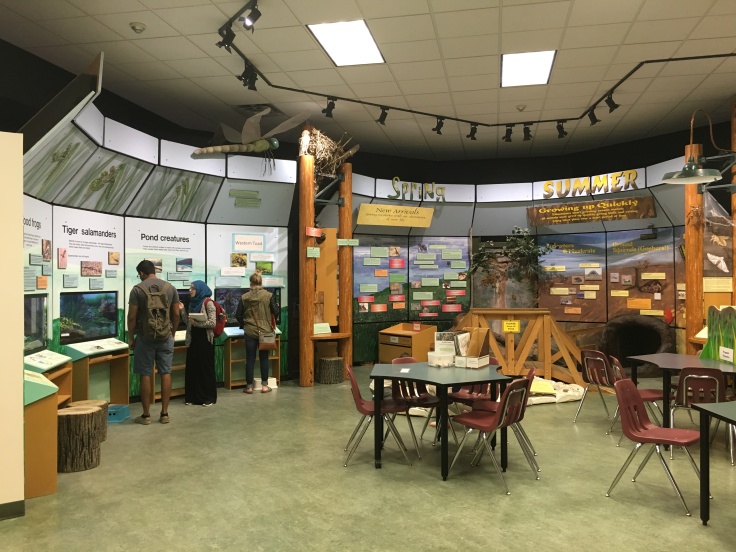
This is a mini playground that is right in front of the previous room I mentioned.
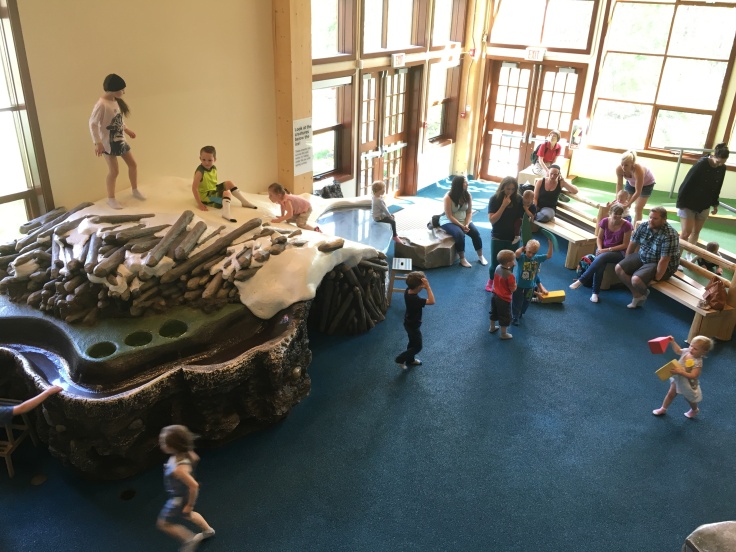
Despite we took these two photos at roughly the same time (about five minutes apart), the number of children playing were completely different. Unlike the previous showroom, this indoor playground had equipments that resembled the looking of animal or natural structure. For example, there was a bee hive exploring tunnel. The children playing seemed having fun, but some parents looked quite tired as they had to supervise their children so that the kids did not hurt theirselves. While there were a lot of parents were present, all the equipment were designed only for kids except the benches. Therefore, it was rather ironic that the facility asked parents to take care of their children while their did not provide equipments for them to interact with their children. Coming back to our toptic about childhood obesity in low income families, we noticed that the ticket costed $7.50 per person (same for adults and children). So in terms of price, it was likely that a low income family could not afford the tickets. In regards to transportation, a lot of families drive but there is also possibilities for pubic transit. So we did not see a lot of opportunities for design intervention in transportation.
Next we visited Kingsway Recreational Centre. Although we were not allowed to take photos, we got the information that there are certain numbers of low income people using Leisure Access Program: The Leisure Access Program allows eligible low-income Edmontonians to access participating City of Edmonton recreation facilities, which I mentioned in previous blog. It includes:
- 75% discount for 3 registered programs and required supplies for adults and seniors
- 75% discount for 4 registered programs and required supplies for children and youth
Therefore, this program is doing its job in promoting physical activities in low income families. However, there is still potential for us to improve it by making this program more accessible to people.
Then, we ate Japanese cuisine to maximize our productivity.
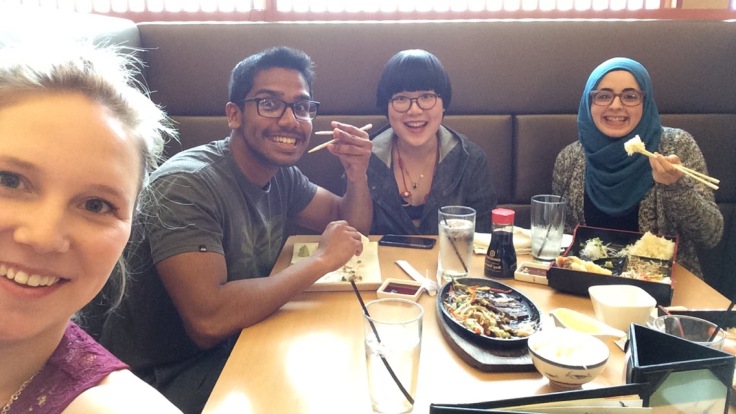
It was such a energy booster. And Fatme learnt how to use chopsticks for the first time ever.
Our next stop was Food Bank in which we got a lot of information from. The facts we learnt from lovely Walter who works at Food Bank are that:
- A lot of people are using it
- It is not government funded (the government is not even paying a cent)
- The hamper/food box is heavy (people would bring their own bags or use donated bags to transfer food)
- A lot of people do not know what is considered healthy
- 80% people are volunteers
- 95% people do not have vehicles
- Majority is single mothers
- Cross-cultural demographic
- The biggest donor is the supermarket
- The Challenges are:
- education:
- People do not know what kind of food is nurious
- People do not know how to prepare the food that comes with the hamper
- possible solution:
- Best before date stickers
- portion plate/cup
- stakeholders:
- Manufacturers
- Distributors i.e. Food bank
- Donators
- contributing factors:
- Low income families who are under educated
- Budgeting:
- People go to McDonald’s as monthly treat which often cost a main portion of their monthly budget
- There are people riding cabs for $50 to get $30 hampers
- Possible solution for budgeting:
- programs like Money Matters: a program that helps people to budget
- Utilize the time when people are waiting for hampers–teaching them how to budget their money or food wisely
- education:
- Access to transportation:
- How do people get there: 95% clients of the Food Bank do not have cars/vehicles but the have their community in which they carpool
- Some have kids to look after, so taking public transit is not as accessible for them
- Distribution centers cover large areas, a lot of them live far from any of the depots
- Possible solutions:
- Rides to food bank
- Delivery system
- Carts that help them to carry
- Car pool system that is more developed so people who does not have a friend to carpool with can also be benefited
From the interview, we have two main avenues that have potential for design intervention to happen: transportation and education. Taking the fact that a lot of people getting food from Food Bank have a community for carpool, we might draw our main focus to education (education on nutrition or budgeting).
a photo of Ravin and Fatme checking out the food in freezer:
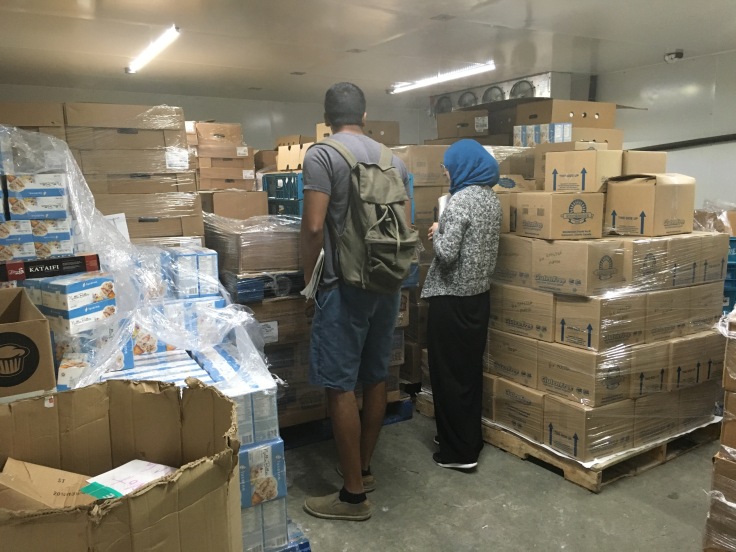
Fatme carrying a standard hamper that is almost half hight of her and being optimistic:
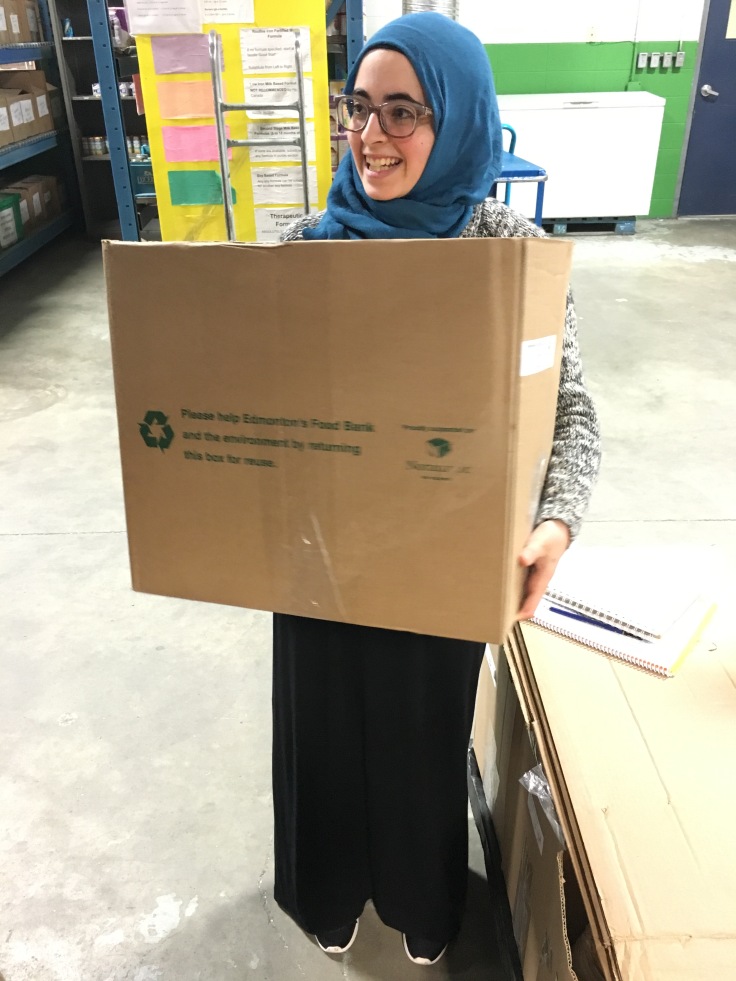
All in all, we learnt a lot from talking to people who were involved in the process. And seeing a lot of people who are struggling for their lives and needing help. I sincerely hope that our design intervention could help them.

Leave a comment